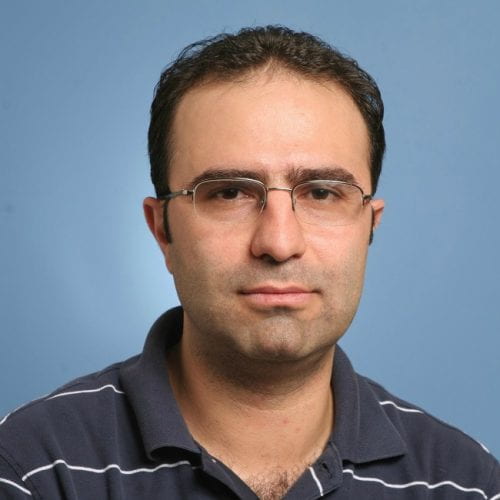The tutorial presentations can be found and downloaded here.
Presenters are encouraged to use the SGSMA2024 presentation template which can be found here! Corporate logos may be used on the cover slide but not on the subsequent slides. The presenters should ONLY present the content that can be posted freely on the conference website.

Tutorial 1
Synchro-Waveforms: Principles, Real-World Examples, Data Analytics & and Industry Use Cases
Room#212
Abstract:
Waveforms are the most granular representation of voltage and current in power systems. With the latest advancements in power system measurement technologies, it is now possible to obtain time-synchronized waveform measurements, i.e. synchro-waveforms (also known as time-synchronized point-on-wave measurements), from different locations of a power system. Waveform Measurement Units (WMU) can capture the most inconspicuous disturbances that are overlooked by other types of time-synchronized sensors, such as phasor measurement units (PMUs). In this tutorial, a team of experts from academia, the sensor industry, and the utility industry will discuss the recent advancements and the practical challenges and opportunities in this new field. Different aspects will be covered in this tutorial, including sensor technologies, data collection, data analytics, and recent and emerging use cases. Various examples based on real-world data and applications will be presented in this tutorial.
The tentative agenda for this tutorial has three parts: 1) Technology and Real-World Data. This part will provide a first-hand experience for the tutorial attendees to see how different physical phenomena on the power grid manifest themselves in voltage and current waveforms. These various phenomena may include faults and incipient faults in grid equipment and assets, such as transformers, capacitor banks, underground cabals, overhead cables, etc. Importantly, the discussions in Part 1 will also include comparisons between WMU data and PMU data; thus to gain a clear insight on what kind of analysis may require access to synchro-waveforms as opposed to synchro-phasors. 2) Data Analytics and Methods. The focus will be on using methods to utilize synchro-waveform data for situational awareness. This will be done by the analysis of `events’ in synchro-waveform measurements. Such analysis comprises various aspects, such as event detection, event characterization/ classification, and event location identification. We will briefly cover two types of analysis in the time domain and in the frequency domain. The combination of these methods provides a set of tools for situational awareness via synchro-waveforms. 3) Recent and Emerging Applications. This part will cover the existing and future applications of synchro-waveforms in power systems. Most notably, the focus will be on equipment and asset monitoring with a focus on incipient faults, monitoring and modeling inverter-based resources, detection and identification and abnormalities, such as subsynchronous oscillations, ignition, etc., as well as enhanced power quality analysis.

UC Riverside, USA
Hamed Mohsenian-Rad (Ph.D., IEEE Fellow) is a Professor of Electrical and Computer Engineering and a Bourns Family Faculty Fellow at the University of California, Riverside, USA. His research interests include developing data-driven and model-based techniques for monitoring, control, and optimization of power systems and smart grids. Dr. Mohsenian-Rad has received the NSF CAREER Award, a Best Paper Award from the IEEE PES General Meeting, a Best Paper Award from the IEEE Smart Grid Comm, and a Best Paper Award Finalist from the IEEE PES ISGT Conference. Two of his papers are currently ranked as the two most cited articles in the IEEE Transactions on Smart Grid. Dr. Mohsenian-Rad is the author of Smart Grid Sensors: Principles and Applications, a textbook on smart grid sensors and data-driven applications. He is the Associate Director of the Winston Chung Global Energy Center, an endowed research center in the area of energy and sustainability at UC Riverside. He is currently an Associate Editor of the IEEE Transactions on Power Systems. Previously, he served as Associate Editor of the IEEE Transactions on Smart Grid. He has served as PI or co-PI for over $15 million in smart grid research projects.

Power Monitors Inc., USA
Chris Mullins is President at Power Monitors, Inc. in Mt. Crawford, VA. Chris leads a company devoted to leading-edge product development to meet the needs of electric utilities and electricity end-users. His 29 years at Power Monitors have provided him a deep background in electric power quality, power line communications, and electronic instrumentation design, and his work has resulted in patents in power line communications techniques, power quality instrumentation, and energy monitoring. Chris is an active member of several IEEE standards groups and has authored over 70 white papers on many power-quality topics. He holds a BS degree in Electrical Engineering from the University of Virginia.

McEachern, USA
Alex McEachern is the CEO of McEachern Laboratories in Alameda, California. He is known globally for his contributions to electric power measurements. He is a Life Fellow of the IEEE, a Visiting Scholar at U.C. Berkeley's Department of Electrical Engineering and Computer Science, and an Affiliate of the Lawrence Berkeley National Lab. He Chaired the development of many IEC, IEEE, and SEMI Standards. Instrument companies that were founded and led by McEachern have accumulated US$300 million in global revenues and created more than 3,000 person-years of productive employment. Jointly with Prof. von Meier he led the development of the microPMU for the U.S. Department of Energy. He led the technology development of the Grid Resonance Probe for DARPA, and he personally developed the GridSweep instrument for the Solar Energy Technology Office at the US Department of Energy. He has been awarded 31 U.S. Patents.
Tutorial 2
Modern Data Analytic Applications to Assess the Dynamic Stability of Power Systems
Room#212
Abstract:
This tutorial is organized by the IEEE WG on Big Data & Analytics for Transmission Systems, and different data analytic applications for synchrophasor measurements will be provided. Attendees of this module will work on hands-on exercises with step-by-step examples for each application case. Synthetic and real measurements will be used as input data to the algorithms and the applications will span IEEE benchmark models and real systems. Examples of programming codes will be provided, where the participants will be able to understand the development their own solution to similar constraints. Moreover, additional references to support the material covered during each session will be provided. First, an application of state estimation to an unbalanced distribution system will be presented. Then, an example of how to derive reduced-order models with a demonstration in the Chilean system is going to be given followed by a demonstration on how to identify inter-area modes based on PMU measurements.
- Course Outline (duration 2h)
- Time-synchronized state estimation in (micro)PMU-unobservable distribution systems (40 min), Anamitra Pal.
- Data-driven, Reduced-order Models for Online Dynamic Security Assessments (40 min), Hector Chavez
- Identification of Inter-area modes based on Ringdown Oscillation’s Monitoring and Analytics (ROMA) (40 min), Mario Arrieta

Arizona State, USA
Anamitra Pal is an Associate Professor in the School of Electrical, Computer, and Energy Engineering at Arizona State University. His research interests include data analytics with a special emphasis on time-synchronized measurements, artificial intelligence-applications in power systems, renewable generation integration studies, and critical infrastructure resilience. Dr. Pal has received the 2018 Young CRITIS Award for his contributions to the field of critical infrastructure protection, the 2019 Outstanding Young Professional Award from the IEEE Phoenix Section, and the 2022 NSF CAREER Award.

University of Santiago de Chile, Chile
Hector Chavez received the Bachelor's, Civil Engineer in Electrical and Master's degrees in electrical engineering from the University of Santiago, Santiago, Chile, in 2004, 2006 and 2006, respectively, and the Ph.D. in electrical and computer engineering from the University of Texas at Austin, Austin, TX, USA, in 2013. In 2013, he was a postdoctoral fellow in the Department of Electrical Power Systems, School of Electrical Engineering, KTH Royal Institute of Technology, Stockholm, Sweden. From 2006 to 2009, he was an Instrumentation Engineer at WorleyParsons Minerals and Metals, Santiago. Currently, he is the Director of the Department of Electrical Engineering at the University of Santiago.

UNAM, Mexico
Mario Arrieta Paternina received the D.Sc. degree in Electrical Engineering at CINVESTAV, Guadalajara, Mexico in 2017. He joined the Department of Electrical Engineering of the National Autonomous University of Mexico (UNAM) in 2017 where he is currently a Full-time Professor. His current research interests include modeling, simulation, control, and digitalization of resilient electric energy transmission and distribution networks. Dr. Paternina is a member of the Mexican Research System.
If you have any questions about the SGSMA2024 Tutorial Schedules, please reach out to the organizing committee at contact@sgsma2024.org.
